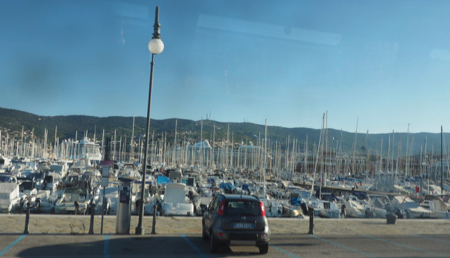
Yacht harbor - there is a 15 year wait to rent a slip!
The cruise ships in the background are all empty
|
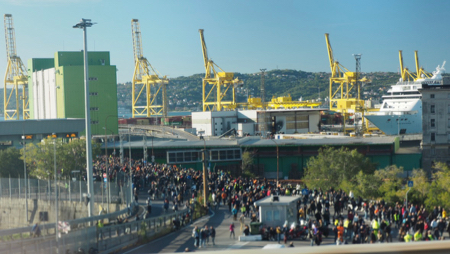
Dock workers protesting the green (Covid) card mandate |
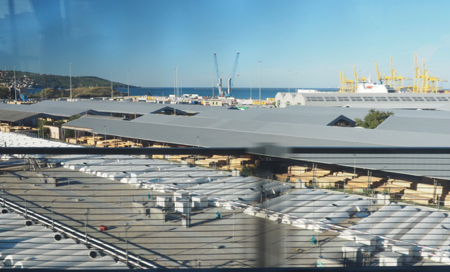
Large timber terminal where lumber awaits to be exported
|
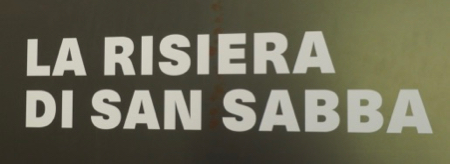
Our first stop was at the old rice factory that became the San Sabba concentration camp. The Nazis killed as many as 3,000 Italian resistance soldiers and resistance fighters from Slovenia and Croatia. They also processed tens of thousands of Jews and transferred them to Auschwitz.
|
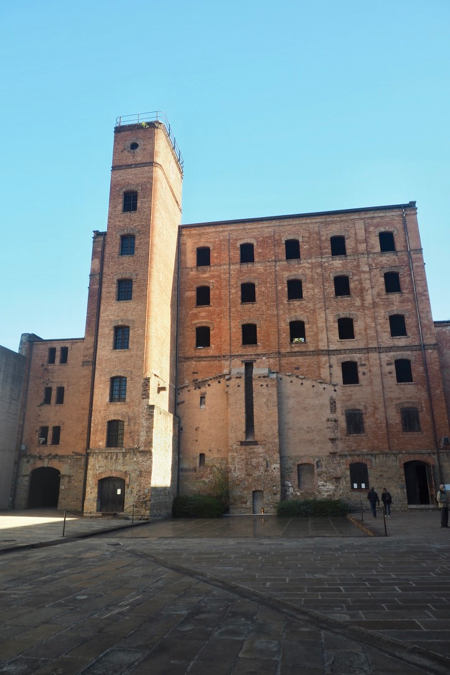
San Sabba concentration camp - site of the crematorium destroyed by the Nazis as they left the camp
|
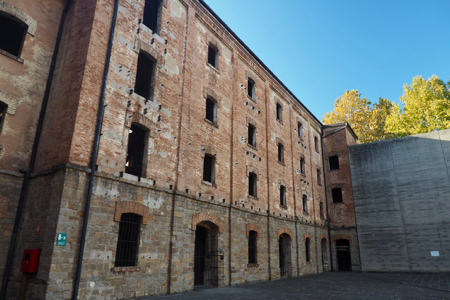
Cell block building |
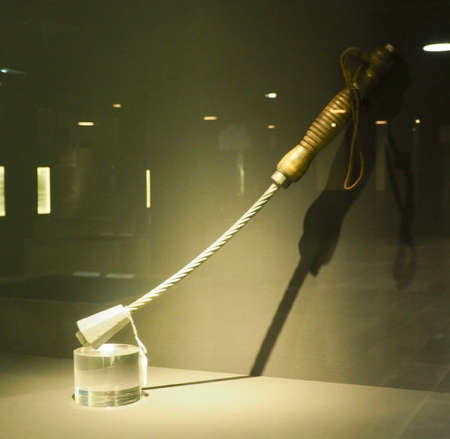
Whip with a solid metal tip - used to punish prisoners
|
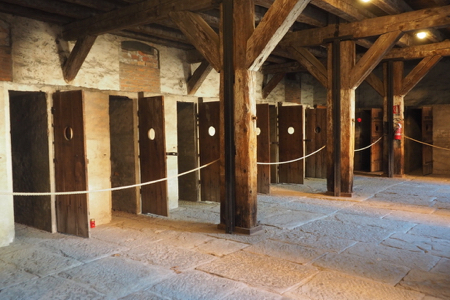
Up to 6 prisoners were held in each of these 6 x 6 foot cells |
After the concentration camp visit, our bus took us up to the top of the Hill of San Giusto to see the Trieste Cathedral - Basillica to Saint Justus. The bell tower and the Cathedral were built over a Roman ruin. There are Roman columns as part of the bell tower wall and a 5th c. mosaic floor in the church. There is evidence of 11th c. and 13th c. walls.
|
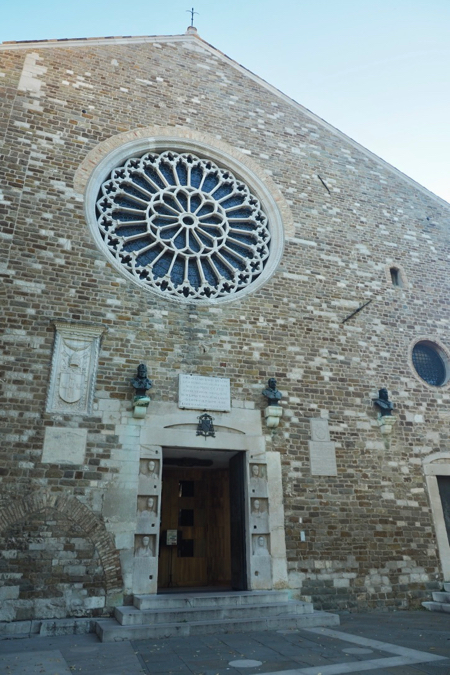
Trieste Cathedral - Basillica to Saint Justus
|
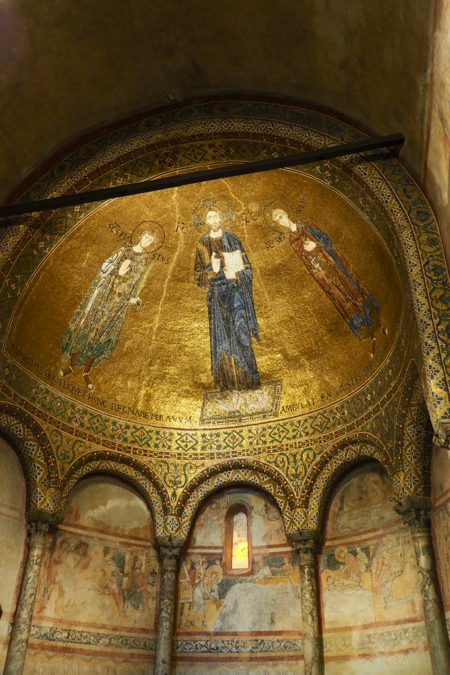
Chapel dome in the Basillica to Saint Justus
|
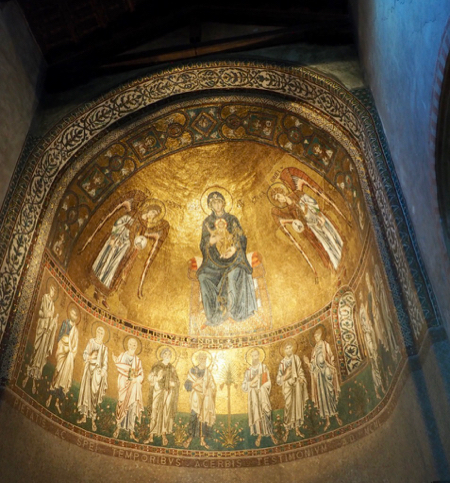
Chapel dome in the Basillica to Saint Justus |
Just down the hill from San Giusto are the well preserved ruins of an old Roman theater. In 1938 Mussolini ordered the destruction of houses on the site in order to build a new building. When the excavations unearthed the theater, he kept it exposed.
|
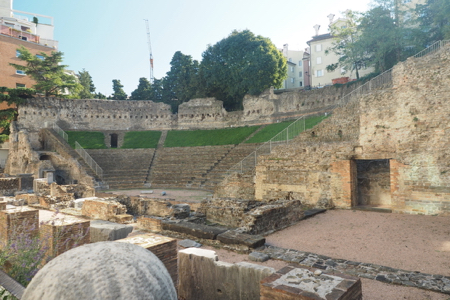
Roman theater
|

Roman theater |
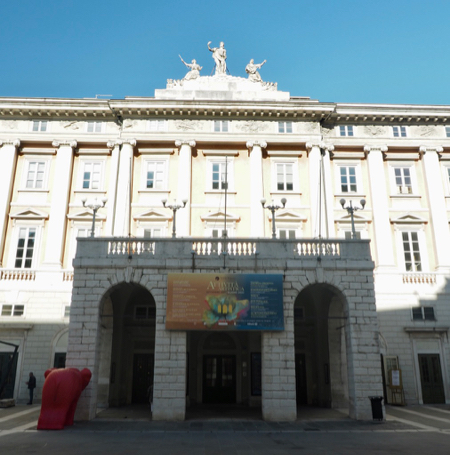
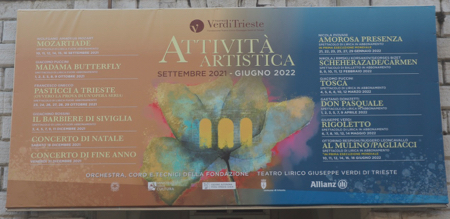
Teatro Verdi Trieste and season's program
|
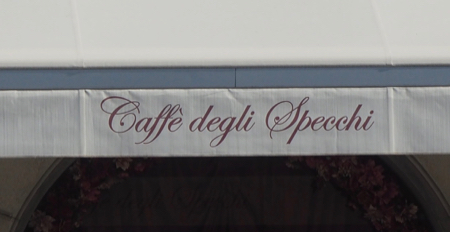
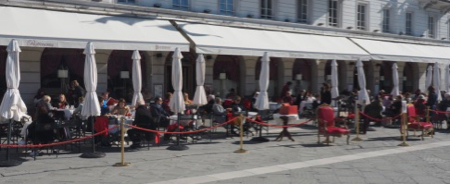
Coffee and a glass of chocolate at the elegant Cafe Degli Specchi
|
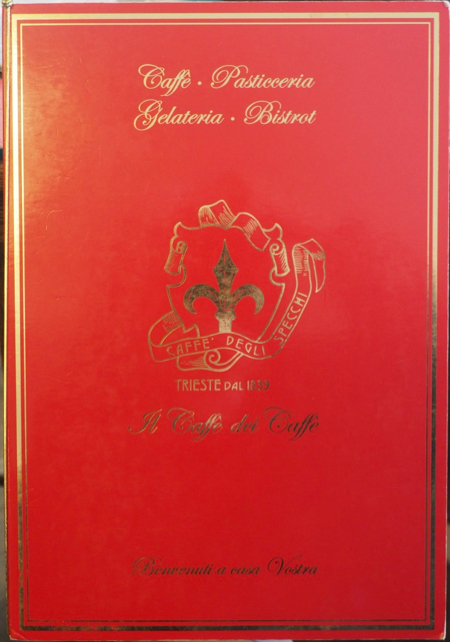
|
The afternoon's excursions were first to see the local Synagogue of Trieste. It is a large square building with an unusual (for a synagogue) rose window with a star of David in the center.
|
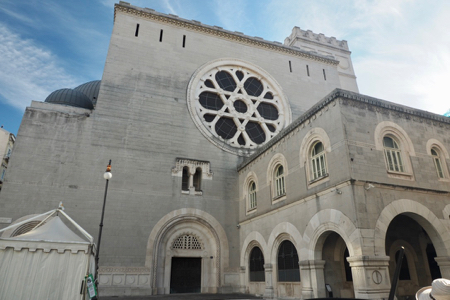
Synagogue of Trieste
|
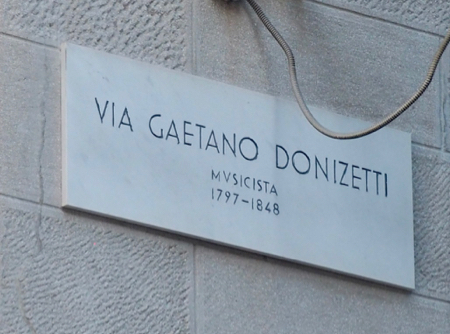
Street on one side of the synagogue |
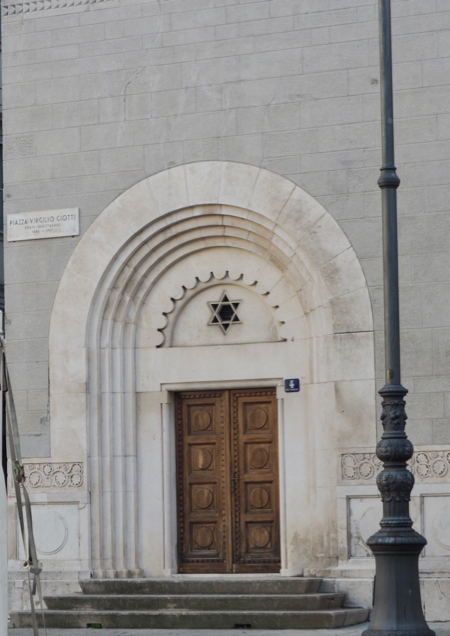
Side door
|
For the afternoon's second excursion, we needed to find a #6 bus to take us out to see the Castle Miramare. Not so easy as buses did not seem to be running on schedule as part of the large demonstration at the port over the green (Covid) card mandate.
Eventually, a #6 bus came and took us out to the castle. The Castle Miramare was built in 1865. The grounds include a botanical garden that provides a quiet park-like setting. It was a very pleasant day to stroll through the park and to look out over the castle wall to the sparkling Adriatic.
|
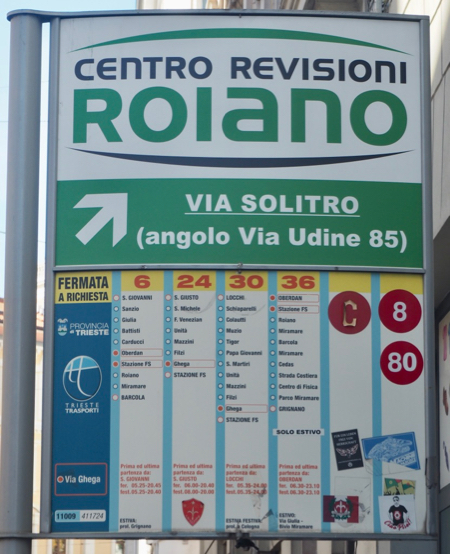
Bus sign - very helpful
|

|
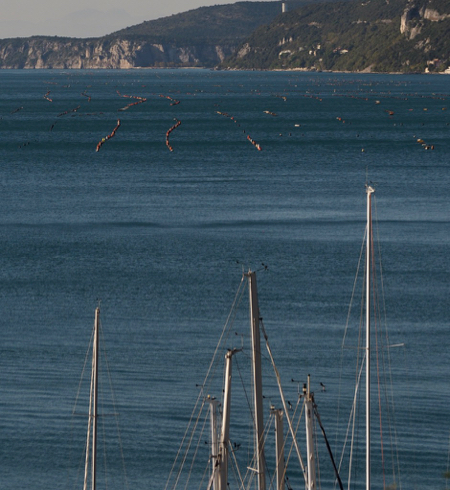
View of the mussel beds from the Castle wall
|
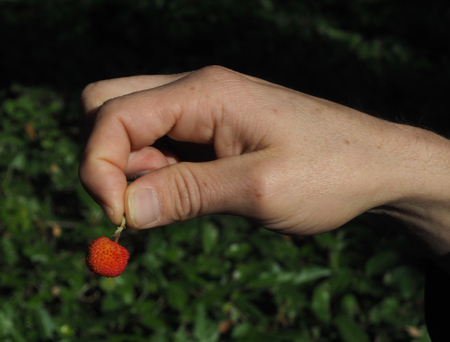
Fruit of the strawberry tree - it even smelled like strawberry |
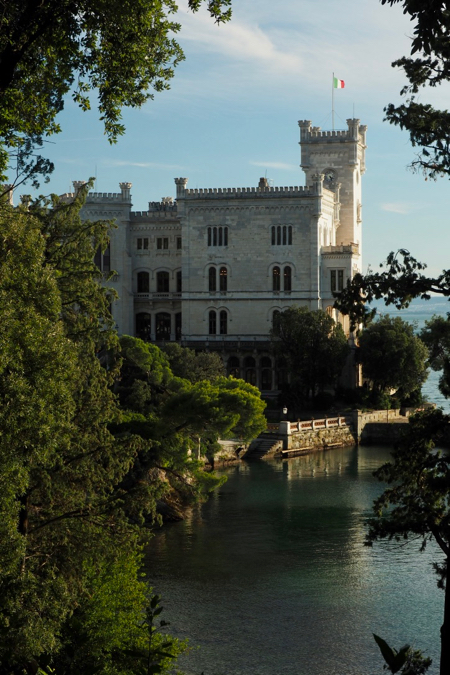
Castle Miramare
|
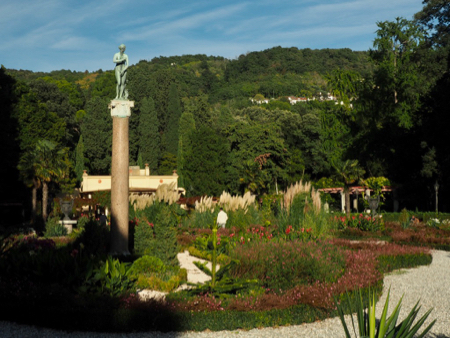
Beautiful grounds and gardens
|
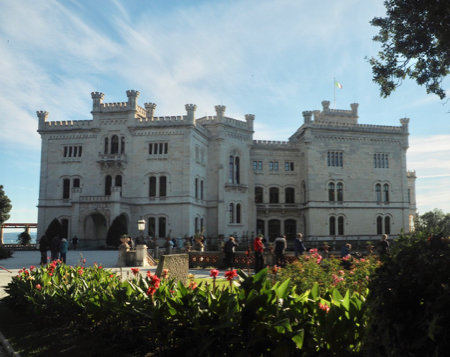
Castle Miramare |
Sat., 10/16 - Motovun and Groznja, Croatia - in the Istria Region
Today the six of us took the “optional” tour to the Villages of Istria. Four of us had taken this trip before but it is a pretty ride into Croatia and through a small section of Slovenia, so we repeated it. The villages of Motovun and Groznja are cute, old, fortified hill towns.
The highway out of Trieste passed the port where Lily processes coffee beans from China and Africa. They also make their coffee machines here in Trieste.
The bus also passed many salt pans which are no longer in use. Salt from Africa is cheaper.
There were border crossings when we passed through the corner of Slovenia - into Slovenia and then back out into Croatia. The reason for this control is a little unclear as both are EU members but Croatia is not a Schengen country - and then there is Covid. It wasn't much of a problem. Our passports were stamped but we did not have to show COVID vax cards.
Motovun was quiet and just about everything was closed except the ticket office - they now charge to walk around the city wall. We did not stay long. Motovun was fortified by the Venetians in the 15th c. to keep the Turks out. Venice needed the oak trees in the surrounding forests to build their ships. The legend says that the town on the hilltop was built by giants.
Motovun is the birthplace of Mario Andretti of auto racing fame.
|

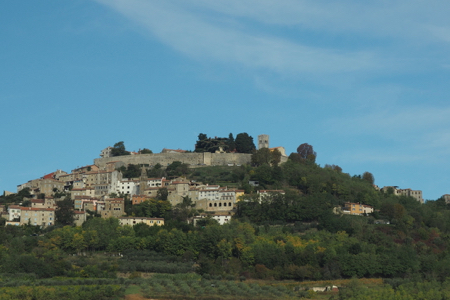
Motovun from below
|
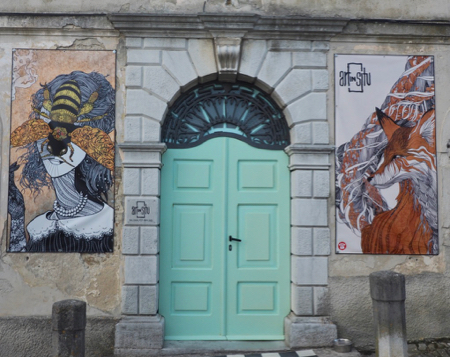
Decorated doorway |
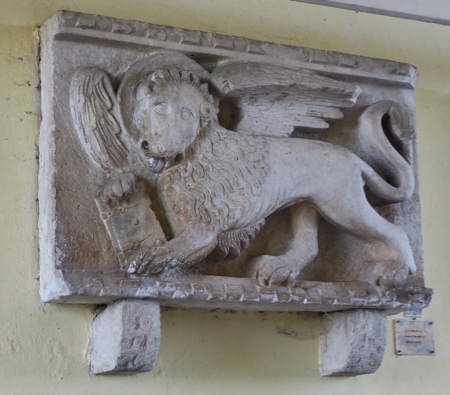
Lion of St. Mark - shows Venetian influence
|
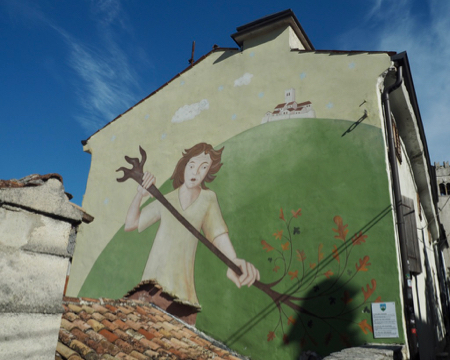
Dragonja, reputed to be the founding giant of Motovun
|
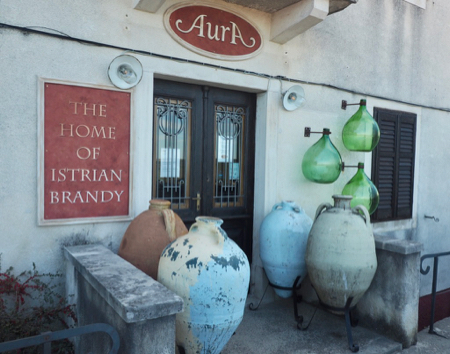
|
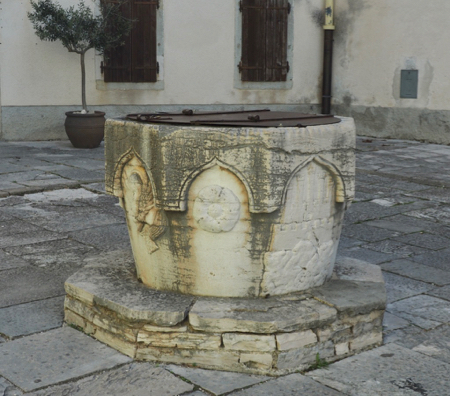
City well
|
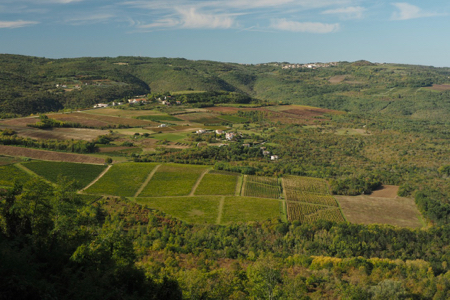
View of the fields from the town walls |
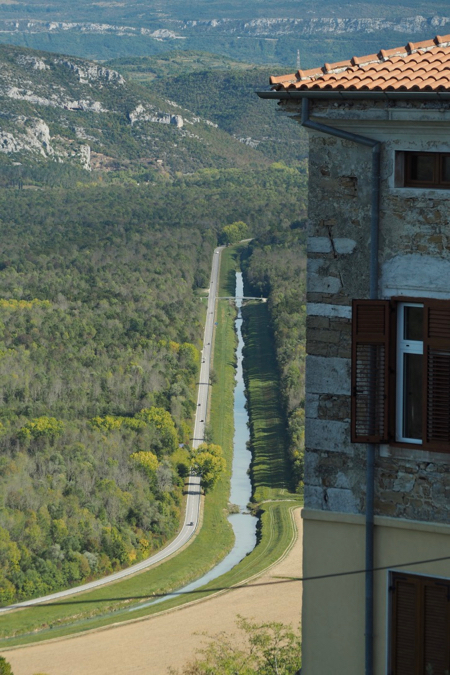
From the walls
|
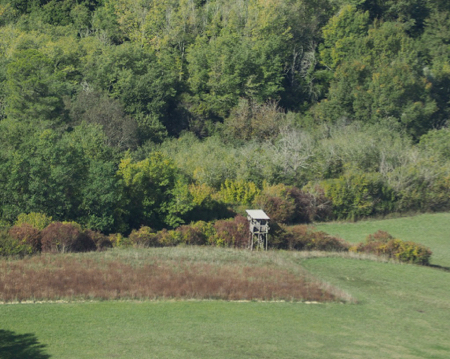
Deer hunter's blind in the fields
|
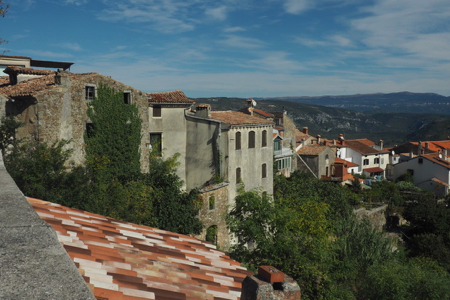
Typical houses and buildings
|
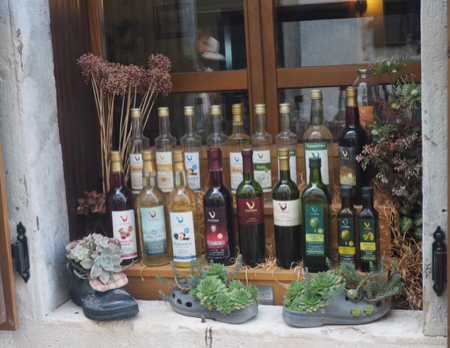
Local products and creative use of Crocs |
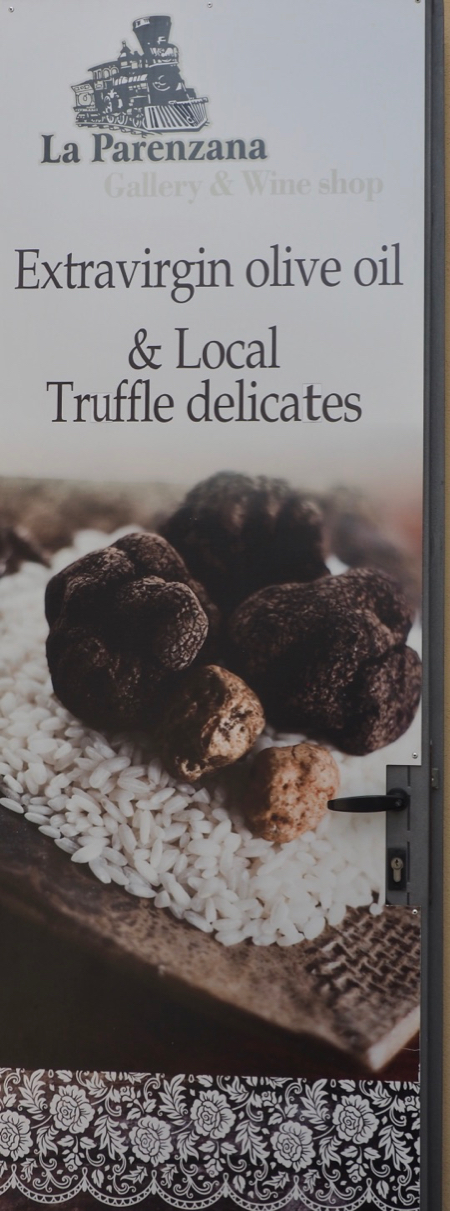
Motovun is famous for its truffles!
|
Lunch was at Miro Tartufi where everything had truffles in it. There were three kinds of truffle bruschetta, truffle and anchovy, salami and cheeses; scrambled eggs with truffles; and chocolate cake with truffle and cream filling.
|
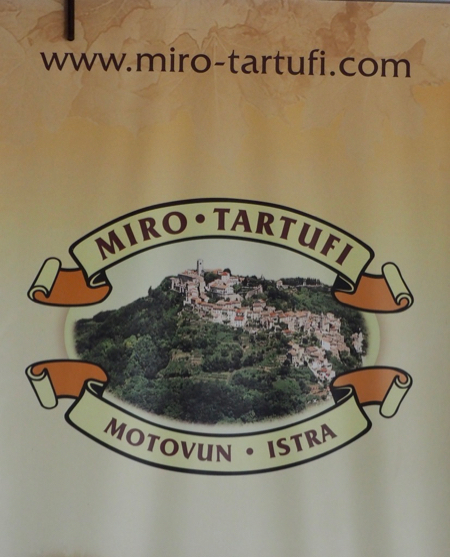
|
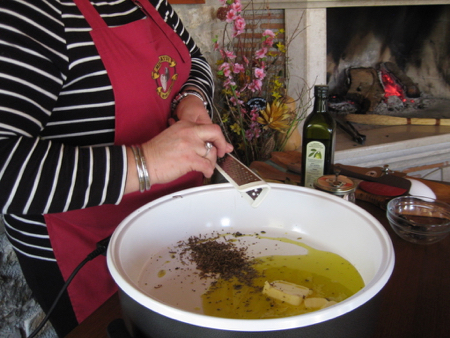
Preparing the scrambled eggs
|
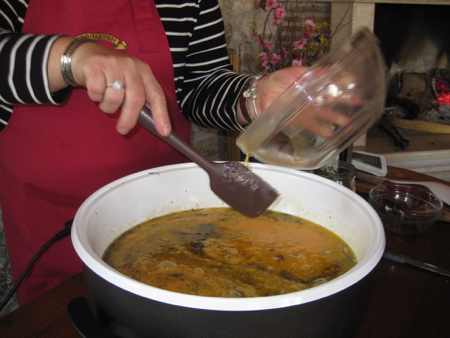
Preparing the scrambled eggs |
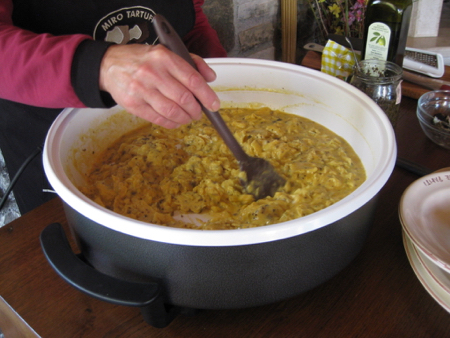
Preparing the scrambled eggs
|
After lunch we drove to, and walked around, the artist colony and hill town of Groznja. It also was mostly closed for the season. The cobbled streets in Groznja were very difficult to walk on. We saw yet another wedding and spoke with one guest who was from New Jersey. She explained that the linen or silk scarfs that were draped over the shoulder of some of the guests were traditional handmade scarfs brought out only for family weddings. |
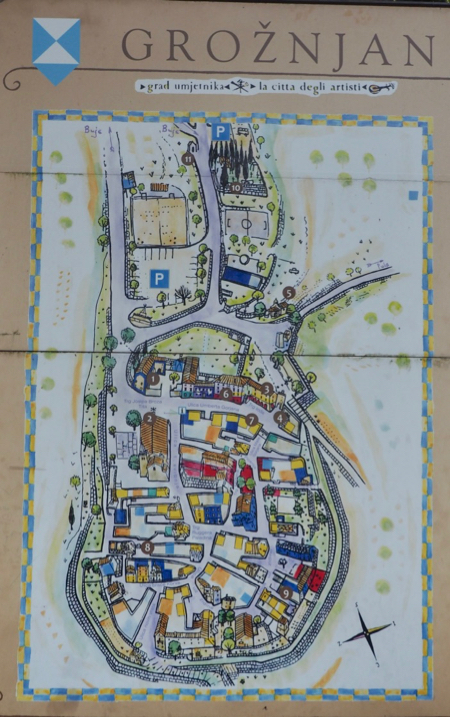
|
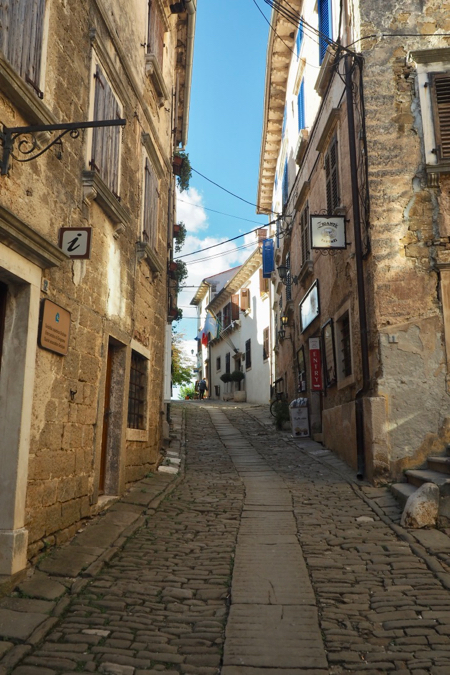
Cobbled streets - real ankle breakers
|
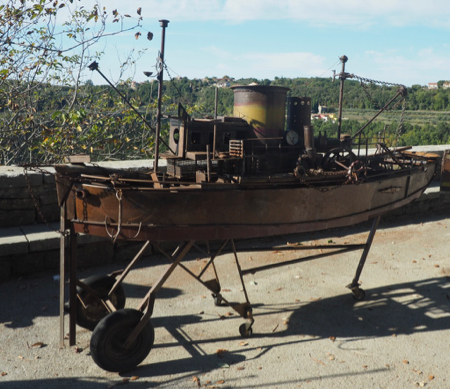
Model ship - purpose unknown |
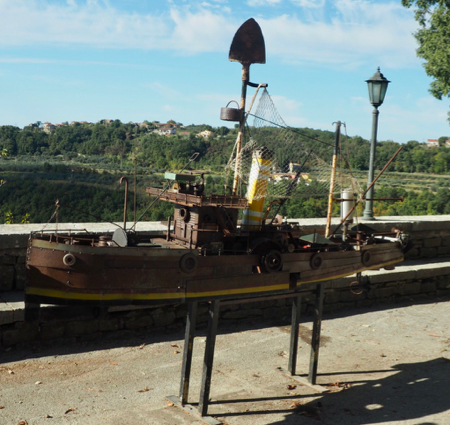
Model ship - purpose unknown - to use up junk, maybe?
|
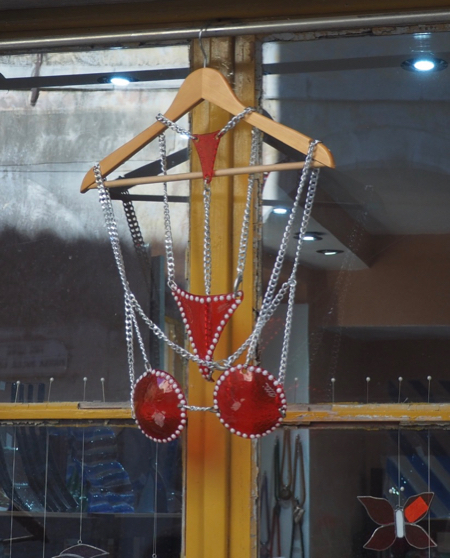
Interesting stained glass piece! |
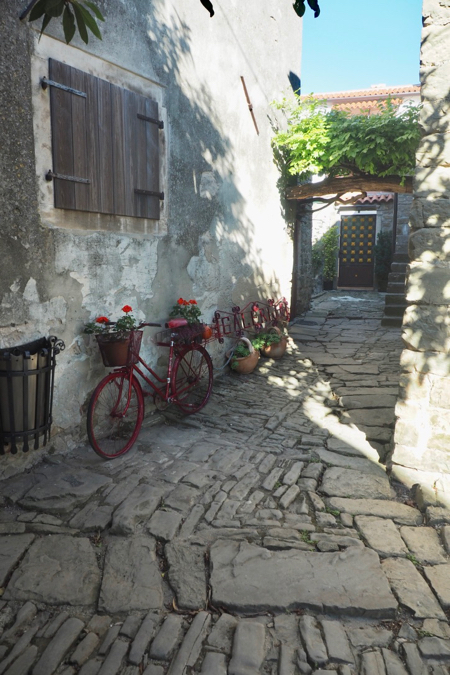
Cute decorations
|
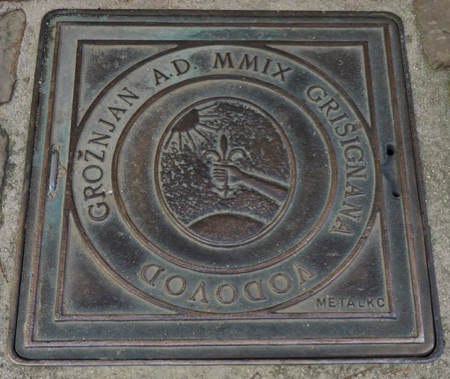
Local manhole cover
|
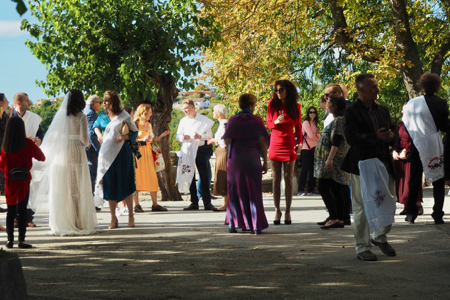
Wedding - see the note above about the scarfs
Certainly a variety of apparel on the guests
|




















































